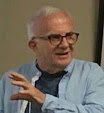When Elizabeth greeted Mary, she practically shouted her own version of the Ave Maria: “Blessed are you among women!” This is how we want to see her: Blessed, exalted, favored, chosen. We dress her images in the finest gold, silver, fabrics and lace. She is the epitome of strength, beauty, and serenity.
We forget the elder Simeon’s blessing and prediction that a sword would pierce her soul. We forget the terror she must have felt when Herod’s soldiers came looking for her child, slaughtering so many children as they did so.
We forget the panic she must have felt when Jesus went
missing for three days, missing in a large anonymous crowd, missing somewhere
in the tense urban streets and back alleys of Jerusalem; no one knew where he
might have gone.
Hail Mary? We forget the apparent rejection by Jesus himself when
she and her other children came to talk with him. “Who is my mother?” he said.
Then, pointing to the crowd, he said, “These are my mother and my siblings.
Those who do the will of God, they are my family.” Did this sword pierce her
soul?
We forget her agony as she helplessly witnessed her child's arrest by brutal Roman guards, his trial in a sham court, and his scourging in
a public setting while the crowds jeered and mocked. We forget her despair as
Jesus staggered under the weight of his cross on the road to Golgotha. We
forget, finally, that she watched life ebb from his suffering body, the same
body she brought forth from her own.
Hail Mary? We forget that, as the sun descended
in the sky, she accompanied his broken body to a borrowed tomb. We forget the
heavy rock that barred her from giving a farewell kiss to her beloved child.
Alas! An even greater pain may have penetrated her soul.
Did she ever know this child? This child who lived in two realities simultaneously? Do we ever really know the “other,” even when the “other” is our own child?
Judith Dupré writes,
“We cannot know the inner
recesses of another person’s soul, those mysterious gulfs that mark the
inevitable distance between individuals. As parents or caregivers, we plan,
hope, and nurture, but the day comes when our children let go of our hands and
venture forth into the world to taste it on their own terms, and that
world—their world—is not ours to know…”
Clara Park tells of her
relationship with her autistic daughter:
“She moved among us every day, among us, but not
of us... She existed among us, (but) she had her own being elsewhere…”
So, too, was Mary called to trust the ways of a child who was
hers, but not hers… who drew his being from her and from somewhere else beyond
her understanding.
Finally,
we forget the survivor’s pain. “The path of the dead is in the living,” wrote
Italian poet Giuseppe Ungaretti. Regardless of how we read scripture or what we
believe, these memories would never go away. These sorrows persisted within
her.
For all these reasons, we say to her most tenderly, “Hall Mary,
Pietà, May God be with Thee.”
©Gilbert Friend-Jones













No comments:
Post a Comment